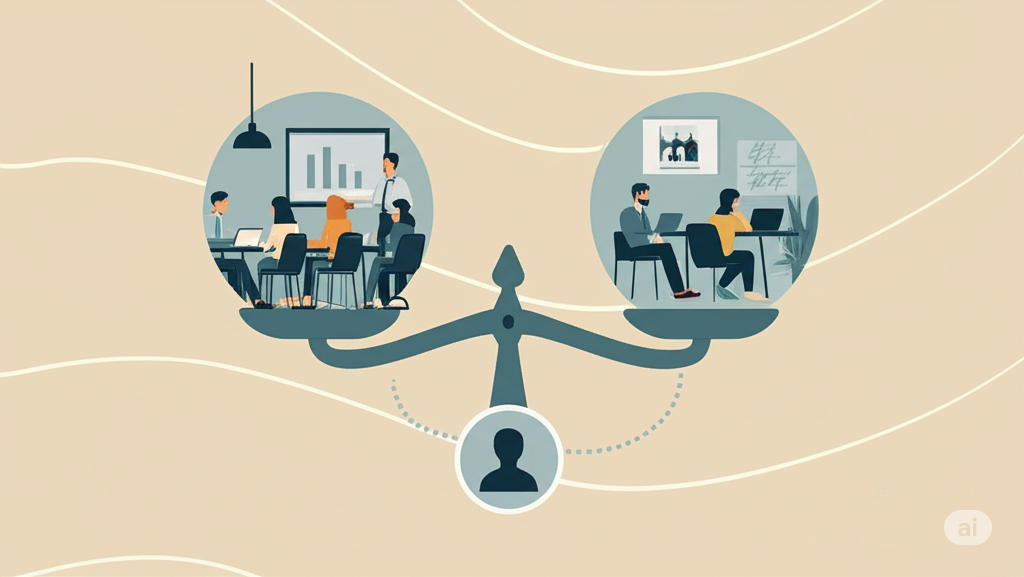As we step into the spring of 2025, the dust from the “grand experiment” of remote work has finally settled. The frantic shifts and debates of the early 2020s have given way to a stable, long-run equilibrium. Today, nearly 30% of all paid workdays in the U.S. are still happening from home-a figure that has held steady since late 2023.

Navigating the Shift: Return-to-Office Mandates and Hybrid Work Trends
The era of radical change is over; the era of refinement has begun. So, what have we learned?
A Strategic Reset, Not a Full Retreat
While the share of new remote job postings has stabilized at around 6%, a significant decline in hiring for fully remote roles in 2024 signals a strategic reset. Employers-especially in digital production-aren’t abandoning flexibility. Instead, they’re opting for structured hybrid models and selective, metro-based hiring. The goal is no longer just to enable remote work, but to make it intentional.
Best Practices for the Modern Hybrid Team
Refinement is the name of the game. For digital production teams fine-tuning their approach, several best practices have emerged as gold standards:
Purpose-Driven Office Days
The office is no longer for answering emails. Leading teams now use “anchor days” to converge for specific, high-value activities—brainstorming sessions, client demonstrations, and intensive project kick-offs.
Focus on Outcomes, Not Hours
Progressive performance metrics have shifted away from tracking hours at a desk. The focus is now on tangible deliverables and the quality of output—a crucial adjustment for evaluating remote and hybrid roles effectively.
Invest in a Seamless Tech Stack
The right tools are non-negotiable. This means latency-free video conferencing, shared digital whiteboards, and asynchronous briefing tools that ensure remote participants are on equal footing with their in-person colleagues.
Proactive Engagement and Well-being
Smart managers are implementing weekly pulse surveys to catch dips in engagement early. They’re also scheduling dedicated one-on-one time to coach hybrid workers on setting healthy boundaries between work and personal life, combating the “weekend creep” that can lead to burnout.
Inclusive and Equitable Perks
To ensure remote staff are treated as “first-class citizens,” companies are extending benefits beyond the office walls. If the office provides lunch, remote employees might receive a meal stipend. If a guest speaker is at HQ, it’s live-streamed for all.
Looking Ahead: The Role of AI in Hybrid Work
As we move forward, the integration of AI tools like Microsoft Copilot and Google Gemini promises to smooth out the remaining friction points, making hand-offs across time zones even more seamless.
Conclusion
The lesson is clear: the future of work isn’t about where you work, but how effectively you connect, collaborate, and create-regardless of location. The hybrid model’s new equilibrium is built on intentionality, inclusivity, and continuous refinement. As organizations embrace these lessons, they’re poised to thrive in the evolving world of work.



